Search results for: Mckinsey 7s
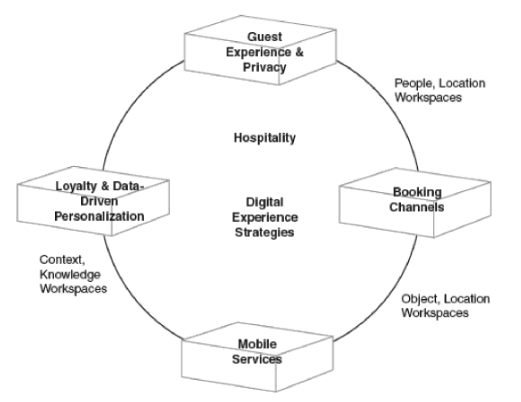
Service differentiation can be specified as the cornerstone of Hilton Hotels business strategy. Specifically, the company differentiates its services on the basis of quality, maintaining the highest level of standards and integrating IT systems into various aspects of service provision. Digital hospitality is one of the main sources of Hilton Hotels competitive advantage. As it is illustrated in Figure 1 below, the company’s digitalization efforts relate to booking channels, mobile services, loyalty and data driven-personalization, guest experience and privacy. Moreover, effective integration of these digitalization points creates additional synergetic impact for the business. Hilton Hotels and Resorts digital experience strategies capabilities[1] Hilton’s business strategy also relies on an extensive international expansion and the Hilton Worldwide added more than 100,000 rooms to its portfolio in 2015 alone, including 14,500 rooms converted from competitors’ brands and independent hotels.[2] It has to be noted that Hilton’s business strategy of an aggressive international business strategy and service differentiation with the focus on quality has resulted in the accumulation of USD10.5 billion debt, including USD726 million of non-recourse debt by the end of 2015.[3] This is because in order to sustain its business strategy, Hilton has to commit to substantial financial investments in a regular manner, despite the volatility of revenues caused by seasonal and cyclical nature of the business and a range of other factors. Hilton Hotels and Resorts may find it challenging to sustain its competitive advantages in short-term and long-term perspectives, since it can be copied by existing or new market players to threaten Hilton’s market share. Hilton Worldwide Holdings Inc. Report contains more detailed discussion of Hilton Hotels business strategy. The report also illustrates the application of the major analytical strategic frameworks in business studies such as SWOT, PESTEL, Porter’s Five Forces, Value Chain analysis and McKinsey 7S Model on Hilton.…
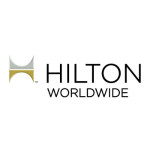
Corporate social responsibility (CSR) can be defined as “the obligation of decision makers to take actions which protect and improve the welfare of society as a whole along with their own interests” (Carroll and Buchholtz, 2008, p.39). CSR represents a critically important aspect of a successful business regardless of the industry. Hilton Worldwide has announced its commitment to continually improve its CSR performance in the following directions: Employees Impact on the local community Environment Responsible sourcing The program ‘Travel with Purpose’ launched in 2011 serves as a guiding principle behind Hilton CSR programs and initiatives. The company releases Global Responsibility Report annually and it includes the details of CSR programs and initiatives engaged by the company. The table below illustrates highlights from Hilton Worldwide 2014-2015 Corporate Responsibility Report: Categories of CSR activities Hilton Performance Supporting local communities October is a Global Month of Service for Hilton. In October 2015, teh company activated 4,145 volunteer projects worldwide resulting in 213,000 volunteer hours in 92 hours Nearly 200 Travel with Purpose Action Grants were awarded in 2015 to support Hilton properties and local communities Educating and empowering workers Hilton Worldwide University offered 2 million courses and 5 million hours of learning for employees in 2015 alone More than 14,000 Hilton managers attended its ethics and anti-corruption training in 2014 Labour and human rights The company achieved a maximum score of 100% on the Human Rights Campaign Foundation’s Corporate Equality Index Employee health and safety No information found Gender equality and minorities Women represent 51 per cent in Hilton’s US owned, managed and corporate locations Since 2013 Hilton employed more than 7,300 veterans and their spouses Environment a) energy consumption b) water consumption c) Waste reduction and recycling d) CO2 emissions Forbes has acknowledged Hilton as a Top 50 Green Brand and the…
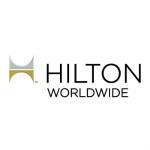
Hilton Hotels segmentation, targeting and positioning refers to ways in which the company chooses individuals to sell its services to and positions the services to appeal to the needs and aspirations of these individuals in the best possible manner. The process of market segmentation involves dividing the market into segments or groups based on the characteristics from the specific market. In this way the most attractive or suitable segment based on the services and products can be targeted very effectively and efficiently. Generally, the market segmentation can be divided into four different groups – geographic, demographic, psychographic and benefit oriented. Geographic Segmentation Geographic segmentation involves targeting specific consumer groups according to their geographic locations in national and international levels. Hilton’s geographic segmentation strategy mainly focuses on building hotels on locations popular with the target customer segment. For example in London, Hilton hotels are found in popular business and travel locations such as Aldwych, Canary Wharf, Bankside, Tower Bridge and Trafalgar Square. Demographic Segmentation A set of variables used in demographic market segmentation include gender, life-cycle stage, age, income, social class, and lifestyle. From this perspective, Hilton targets customer segment represent middle and senior aged professionals with high level of income belonging to upper social class. Moreover, Hilton Hotels & Resorts mainly target individuals that pursue luxury lifestyle, and accordingly, the company charges premium prices for its products and services perceived to be of a relevant quality. Psychographic Segmentation Psychographic segmentation “goes beyond demographics as it examines how a person thinks, feels and behaves, using personality, lifestyle and values as segmenting variables”[1]. The nature of psychographic segmentation used by Hilton involves targeting ambitious individuals who would like to express their perceived high status and achievement by staying in five star rooms offered by the hotel at premium prices. Benefits…
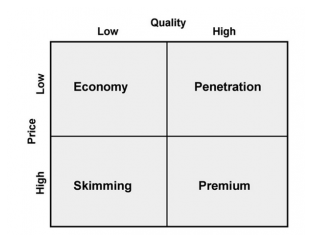
Hilton’s 7Ps of marketing comprises elements of Hilton Hotels marketing mix that consists of product, place, price, promotion, process, people and physical evidence. Product Element of Hilton Hotels Marketing Mix Hilton Hotels and Resorts can be classified as a full service hotel. Accordingly, the range of its services is extensive and includes meeting, wedding and banquet facilities and special event services, restaurants and lounges, food and beverage services, swimming pools, gift shops, retail facilities and other services. Generally, products are divided into three levels: core, facilitating and supporting products. Core products can be explained as a basic form of a product. To put it simply, core products are the main reasons for customers purchasing from a business. For Hilton Hotels & Resorts core product is hotel rooms that customers stay in for a specific period of time. Peripheral services can be explained as additional products and services above the core product that businesses offer to get competitive edge in the marketplace. Facilitating products involve services that assist consumers in consumption of core products. Hilton offers a set of popular facilitating products such as customer services, bars and restaurants, and online reservation facilities. Supporting products include additional products and services that are offered in order to obtain competitive advantage for the business by increasing the value of core products and services. A range of supporting products offered by Hilton Hotels include 24/7 room service, free newspapers and magazines for business travellers, concierge services etc. Augmented product is benefit offer made by businesses that consist of core product and peripheral services. Augmented products offered by Hilton Hotels & Resorts include membership discounts, luxurious room and exterior designs, high class restaurants and relaxed hotel atmosphere. Place Element of Hilton Hotels Marketing Mix The ultimate aim of the distribution strategy for a hotel firm can be specified as making available…
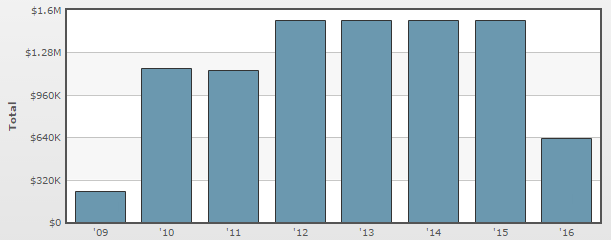
PESTEL is a strategic analytical tool that stands for political, economic, social, technological, environmental and legal factors. Hilton Hotels PESTEL analysis involves the analysis of potential effect of these factors on Hilton’s revenues and its long-term growth prospects. The following is a brief Hilton PESTEL analysis for the UK market in particular. Political Factors Political stability is a basic requirement to success regardless of the industry. In hotel industry in particular, political factors can influence the number visitors, both, tourists and business travellers’ visits to a country in direct and indirect ways. For example, an ongoing delicate political situation Northern Ireland may discourage potential visitors to the region due to safety concerns. Moreover, following acts of terrorism in London on July 7, 2005, UK was temporarily branded as a place that accommodated a set of extremist religious organizations. Risks or threats of acts of terrorism are most likely to reduce the numbers of visitors to London and UK with negative impacts on Hilton performance in this particular market. Hilton Worldwide actively engages in lobbying in order to be able to influence certain political factors upon the business to a certain extent. As it is illustrated in the figure below, the company has been spending more than USD 1.5 million during the past four years for lobbying purposes. Annual lobbying budget of Hilton Worldwide[1] Economic Factors National and international macroeconomic situation and factors and events impacting the situation are major factors affecting Hilton Hotels & Resorts business. For example, during the Olympic times in the UK in 2012 most of the hotels were occupied and booked fully for the whole period. However, the situation was completely different once the Olympic Games were over. Moreover, as a direct result of the global economic and financial crisis of 2007 – 2009, same hotel sales…
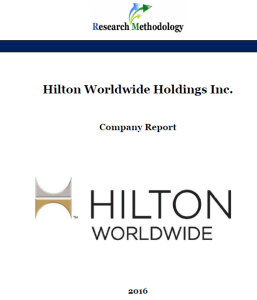
Hilton Hotels is a global flagship brand of Hilton Worldwide Holdings Inc.and it has 572 hotels and resorts in 85 countries and territories across six continents. Hilton Worldwide is the largest hotel company and the fastest growing hotel company in the world. Along with Hilton Hotels, a vast yet focused portfolio of Hilton Worldwide 13 brands in the premium hotels and resorts sector such as Waldorf Astoria, Conrad, Canopy, Curio, Double Tree, Embassy Suites and Hampton. Incorporated in 1919 by Conrad Hilton, currently, Hilton Worldwide owner base comprises 10,000 owners, of which 76% are repeat owners. The company has achieved Adj. ABITDA increase of 13 per cent in 2015 compared to the previous year. Importantly, the company converted 14,000 rooms from competitors’ brands and independent hotels during the same period. In 2015, the company earned the total revenues of about USD 11.2 billion, an increase of about 7 per cent compared to the previous year. In January 2016 Hilton Worldwide launched its latest brand Tru by Hilton which is intended to target mid-scale customer segment. Hilton Worldwide mission statement is formulated in the following manner: “To be the most hospitable company in the world – by creating heartfelt experiences for Guests, meaningful opportunities for Team Members, high value for Owners and a positive impact in our Communities.” Hilton business strategy can be described as service differentiation with a focus on quality, maintaining the highest level of standards and integrating IT systems into various aspects of service provision. The most noteworthy weaknesses associated with Hilton Worldwide include debts of more than USD 10 billion, overdependence on the US market and the lack of flexibility of the business due to its large size. Hilton Worldwide Holdings Inc. Report contains the application of the major analytical strategic frameworks in business studies such as…
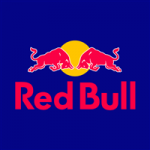
Red Bull 7Ps of marketing explains how the company deals with individual elements of the marketing mix – product, place, price, promotion, process, people and physical evidence, in order to make its products more attractive to the target customer segment. Product. Red Bull product portfolio is highly focused and is limited to the following: Red Bull Energy Drink Red Bull Sugar Free Red Bull Zero Calories Red Bull Editions: tropical, blue and orange editions Red Bull Simply Cola The company also sells brand-related accessories, apparel, media products, headwear and gift ideas from its official website. The company has a history of launching unsuccessful products on a few occasions. For example, Red Bull Cola introduced in 2008 and Red Bull energy shots introduced the 2009 struggled to excite consumers and retailers, thus had to be discontinued in 2011.[1] Place. Red Bull is sold in more than 169 countries.[2] Red Bull sells its beverages via distributors and resellers such as supermarket chains, bars and restaurants and other outlets. The company does not use online sales channels to sell its beverages. However, online sales channel is used to sell brand-related products, accessories and gift-ideas. Red Bull offers a free delivery and refund for up to 30 days for these products. Price. Red Bull pricing strategy can be classified as premium pricing. Red Bull beverages are the most expensive in the energy drink market, as the company charges additionally for the psychological consumer perception of ‘Red Bull Gives You Wings’. Various Red Bull resellers such as supermarket chains, bars and restaurants and other outlets also apply psychological pricing strategy with use of Price Point Perspective (PPP) 0.99 Cents. Moreover, Red Bull pricing strategy also integrates various patterns of promotional and geographical pricing strategies… Red Bull GmbH Report contains a detailed discussion of…
This portal offers reports containing the application of strategic analytical tools SWOT, PESTEL, Porter’s Five Forces Analysis, Value-Chain Analysis and McKinsey 7S Framework. Also our company reports include the analysis of business strategy, leadership practices, organizational structure, marketing strategy and company’s corporate social responsibility (CSR) programs and initiatives. An effective combination of academic qualifications and practical experience in the industry possessed by authors writing for this portal increases the relevance and quality of our company reports. You can access reports here. We produce new reports regularly. Please let us know about the companies you are interested in and tell us which companies we should analyse in our new reports here.
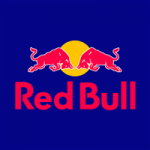
There is a very little information available about Red Bull CSR programs and initiatives. Unlike the major companies of a similar size, Red Bull does not produce an official CSR report. This is partially because the energy drinks manufacturer is a private company, not a corporation, hence there is no shareholder pressure to engage in CSR to a greater extent. Currently, the scope of Red Bull’s engagement in CSR is limited to the following points: In 2013, Red Bull launched its Amplifer scheme, designed to support music start ups Red Bull ECO-Coolers use up to 45% less energy than conventional refrigerators. 650,000 ECO-Coolers are installed up to date 80 per cent of energy in manufacturing processes are used from renewable sources Today Red Bull cans are about 60 per cent lighter than a few years ago Red Bull uses aluminium cans that are 100 per cent recyclable Wall-to-Wall production technique used by Red Bull saves 8,750,000 km of truck travel annually. This technique involves manufacturing and filling cans on the same site and saves more than 6,641 tons of CO2 emissions each year Red Bull Wings for Life campaign funds cutting-edge research projects towards spinal cord injury At the same time, it is hard to see any effort Red Bull is making on the following important aspects of CSR: Supporting local communities Educating and empowering workers Labour and human rights Employee health and safety Gender equality and minorities Responsible water consumption Sustainable sourcing Red Bull GmbH Report contains a criticism of Red Bull CSR programs and initiatives. The report also illustrates the application of the major analytical strategic frameworks in business studies such as SWOT, PESTEL, Porter’s Five Forces, Value Chain analysis and McKinsey 7S Model on Red Bull. Moreover, the report contains analysis of Red Bull’s marketing strategy along…
This portal offers reports containing the application of strategic analytical tools SWOT, PESTEL, Porter’s Five Forces Analysis, Value-Chain Analysis and McKinsey 7S Framework. Also our company reports include the analysis of business strategy, leadership practices, organizational structure, marketing strategy and company’s corporate social responsibility (CSR) programs and initiatives. An effective combination of academic qualifications and practical experience in the industry possessed by authors writing for this portal increases the relevance and quality of our company reports. You can access reports here. We produce new reports regularly. Please let us know about the companies you are interested in and tell us which companies we should analyse in our new reports here.
